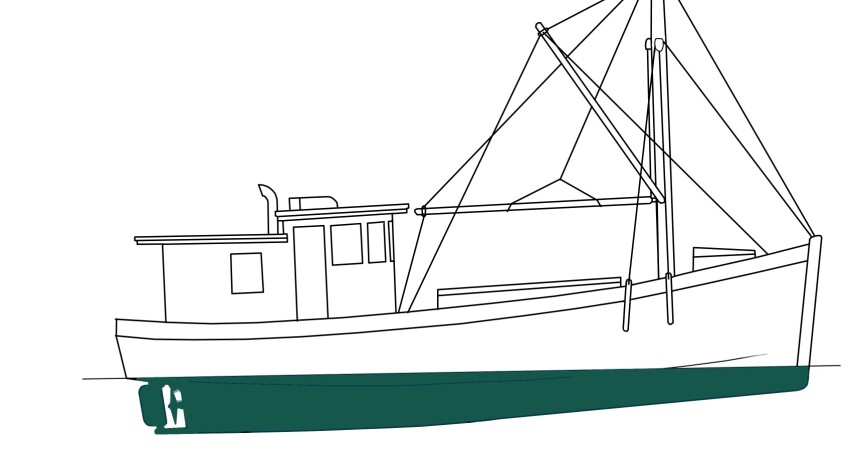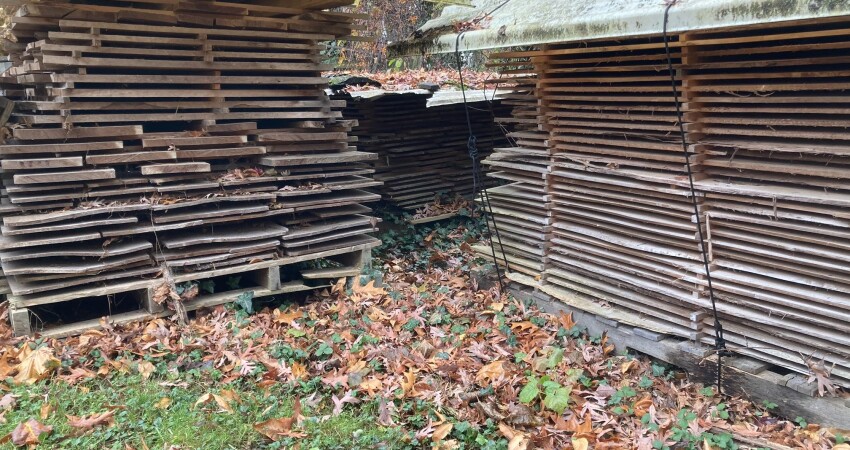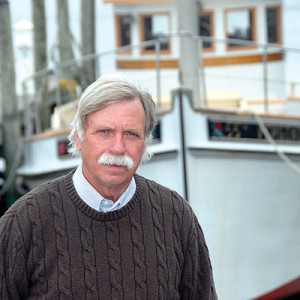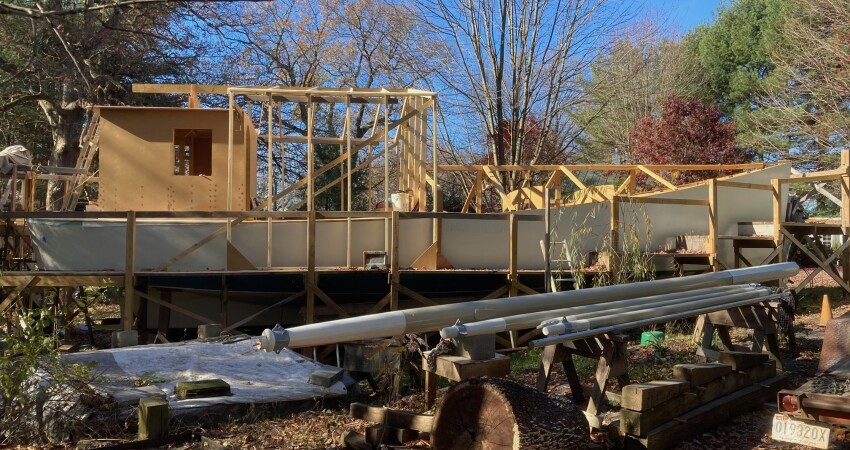Several years ago, while attending the Sultana Downrigging Festival in Chestertown, Md., Jim Drake and his wife Brooke were introduced to Chesapeake Bay buyboats. Brooke fell in love with the boats and Jim set out to build her one.
Since 2015 National Fisherman has followed Jim Drake’s efforts in building his 46-foot Chesapeake Bay buyboat in the couple’s Mount Airy, Md., backyard. Drake’s latest report shows the project is coming along.
But when asked when the boat, named the John Swain, will be launched, he replies, “That’s the $64,000 question! I’m following the lead of Leo Sampson, the guy who restored (the cutter sailing yacht) Tally Ho out in Washington State. His standard answer to that question was always ‘two years’ so that come launch day, he’d be two years ahead of schedule.”
“I’m a one-man shop. When I started this project, I said this is an act of faith or denial or both,” says Drake. “My hope is that four more years will see it ready. That’d make me 80. Wanna take bets?”
During the 1920s and ’30s, more bay buyboat-style commercial fishing and freighting boats were built on Chesapeake Bay than at any other time in the bay’s maritime history. At one time, thousands of these boats were used to buy oysters, crabs and fish from commercial watermen out on the fishing grounds.
Before today’s good roads for trucking, the boats were also used extensively in the freighting business. Today, there are about 40 buyboats in existence, some as museum pieces, a few working in Maryland’s and Virginia’s oyster fisheries, and the rest converted to cruising yachts.

The boat is named for John Swain because of the Drakes’ admiration of the Chestertown, Md. boatbuilder. Swain is renowned as the main builder of the Sultana, which is a reproduction of a 1767 Boston-built merchant vessel that served for four years as the smallest schooner ever commissioned in the British Royal Navy.
Progress
In October, Jim Drake installed a Cummins 6BT 12-valve engine that came out of his old Dodge pickup truck. In the truck, it was conservatively rated at 170 hp @2200 rpms. In the boat it is going to turn a 24” Michigan Wheel 3-blade propeller, working through a 1:91 Velvet Drive gear connected to a 2” stainless steel shaft. “It is more engine than the boat needs for cruising, but it’s what I had and Cummins are pretty bullet proof,” says Drake.
The hull is pretty much complete. All structural aspects of the vessel's hull are made from Douglas fir planks laminated together to shape the keel, stem and other structural parts. Cold-molded plywood, coated with Dynel fabric, was applied for sides and bottom.
What’s left to do on the boat is framing up of the wheelhouse and completing engine systems - prop, cooling, fuel and controls. Moving forward, tankage, plumbing and wiring are still left. The interior paneling, trim and furniture will be made from a combination of yellow pine, Monterey cypress and cherry that have all been sawn on-site on Drake’s bandsaw mill from logs donated by friends and neighbors.
Drake has crafted every wooden element including the mast/boom, made from spruce pine. The mast was traditionally used to hoist tubs full of oysters and barrels full of crabs and fish up onto the deck. He has also made a couple pole booms that will be used for an auxiliary sail. The auxiliary sail configuration is a historical touch.
The use of motorized Chesapeake Bay buyboats started near the end of the 19th century when deadrise and cross-planked wooden construction started on the bay and the internal combustion engine was first introduced. Early motor powered buyboats carried a small sail to provide added power and stability when engine power was not enough.
“I designed the sailing rig for both functionality and to try to keep the appearance of a working boat,” he says. “I feel like I have accomplished that.”








